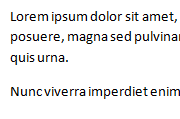


Papermaking Additive Cross-Reference to Related Applications. Mechanical and optical properties of CaCO 3 lumen-loaded paper: Effect of polyethylenimine and plum. Calcium Carbonate–Carboxymethyl Chitosan Hybrid Materials. Fiber loading of hardwood pulp by in-situ precipitation of aluminosilicate. Fibrous Pigments of Nanocomposite Type Pim: Iasi, Romania, 2022 pp. Fillers of papermaking: A review of their properties, usage practices, and their mechanistic role. The authors declare no conflict of interest. One mode of action of polyDADMAC is explained by the ability to neutralize negative surface charges, thus acting as an effective additive. Flocculation by polyDADMAC is due to bridging adsorption between polymer and suspended colloidal particle. One cationic polymer with significant flocculant properties and good performance is polyDADMAC, which is also non-toxic, while also aiding in papermaking sewage treatment reduction costs. Optimized paper properties were shown to be obtained using both pigments and cellulosic materials. Polymers, such as polyDADMAC and cPAM, are currently introduced as retention additives in paper production. When developing a new polymer as an paper additive, observing the synergism or way of interaction of its pigments or other molecules with fibers is the probable way to design high performance additives. An example of such material is lignin, a polymer which is widely available in natural sources, or often as a byproduct in economical processes. In the meantime, additives should be as environmentally friendly as possible therefore new and renewable or low-cost materials are sought after. To accomplish such goals fillers should have a high ability to bond to fibers, a property less common in their natural forms therefore chemical modification is required. As such additives should be used in a way that paper properties are kept or enhanced. While filler materials can improve paper properties such as opacity other properties such as strength and brightness can be reduced. Also, the samples obtained in the presence of cationic polyacrylamide exhibit superior properties to those obtained in the presence of polyDADMAC.Ī mechanism for explaining the properties of additives is the difference of potential between the negatively charged fibers and the positively charged additive polymers which interact due to electrostatic forces. The PCC had a positive influence over all of the paper samples, but in the case of use of cPAM and polyDADMAC polymers the paper obtained had superior properties compared to the paper obtained without additives. To improve the systems of additives studied, the materials obtained were characterized and their optical and mechanical properties were analysed. After testing, the dosage of PCC was established at 35%. PCC was obtained in the laboratory by a double-exchange reaction between calcium chloride (CaCl 2) and sodium carbonate (Na 2CO 3) suspension. Calcium carbonate precipitated (PCC) and fibers cellulose were adjusted with a cationic polyacrylamide flocculating agent (polydiallyldimethylammonium chloride (plyDADMAC) or cationic polyacrylamide (cPAM)). A new class of polymeric additives for papermaking is proposed as well as a method for their use in paper sheet containing the CaCO 3 precipitated addition. In the present work, the possibility of increasing the calcium carbonate (CaCO 3) content in sheets of paper to optimize their properties was investigated.


 0 kommentar(er)
0 kommentar(er)
